From hospital to university library
The façade
screen
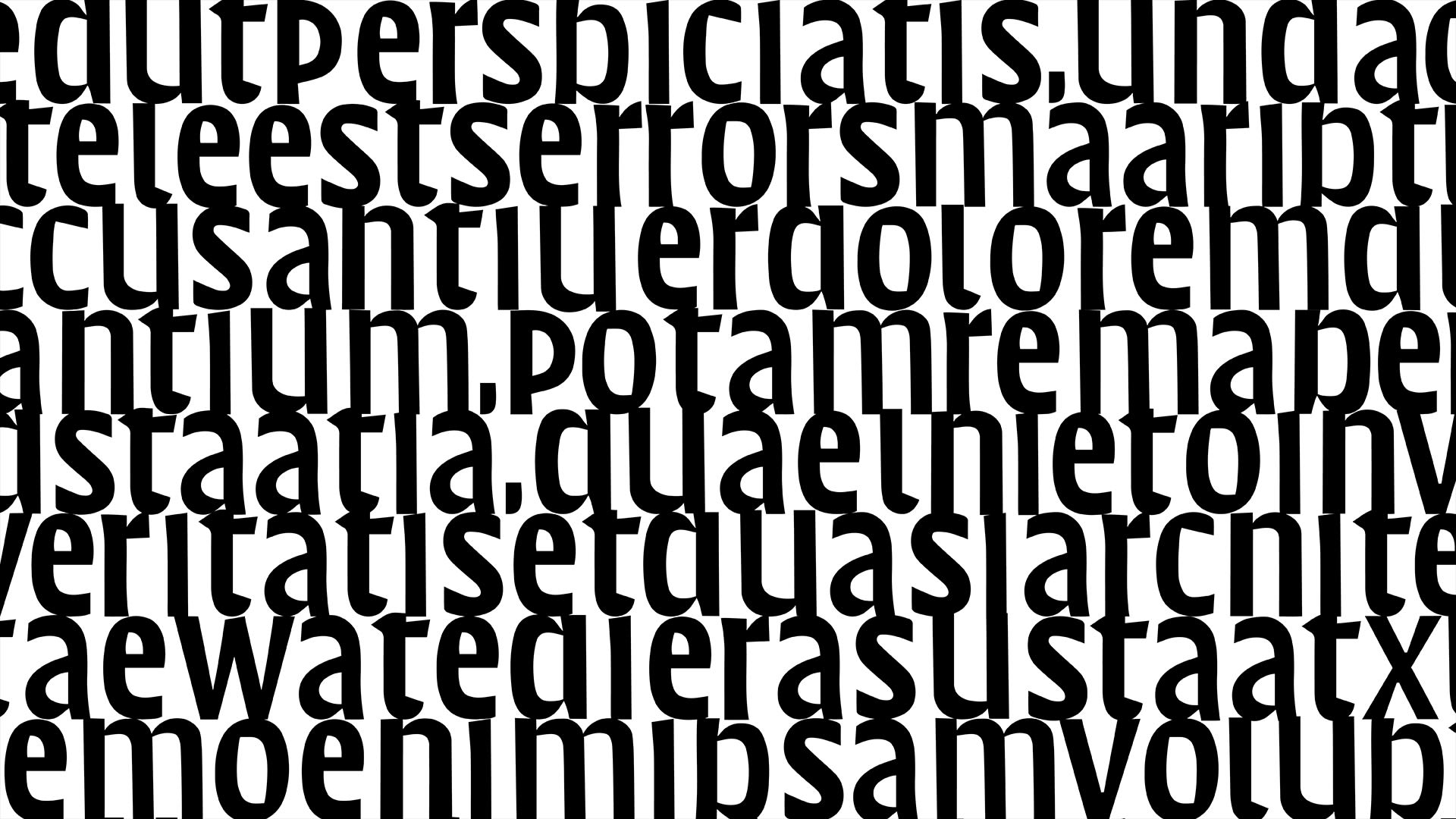
From Hotel and Parking Lot to Poetic Landmark
On the corner of Nieuwe Doelenstraat and Binnengasthuisstraat, the new university library has been built, featuring a façade that immediately catches the eye.
The façade is a landmark; passersby cannot miss the fact that this is the location of the university library. This creates a sharp contrast with the other library buildings: the Second Surgical Clinic and the Nurses' House of the former Binnengasthuis.
The Façade
The façade screen is described by the architect as a light-filtering "veil" that serves as a transitional element between the university library and the nearby residential buildings across the street. The screen creates greater privacy for both sides while also reducing the amount of light from the library entering the neighboring homes.
The image of the model shows the building’s initial design. In this first version, the façade screen features an abstract pattern.
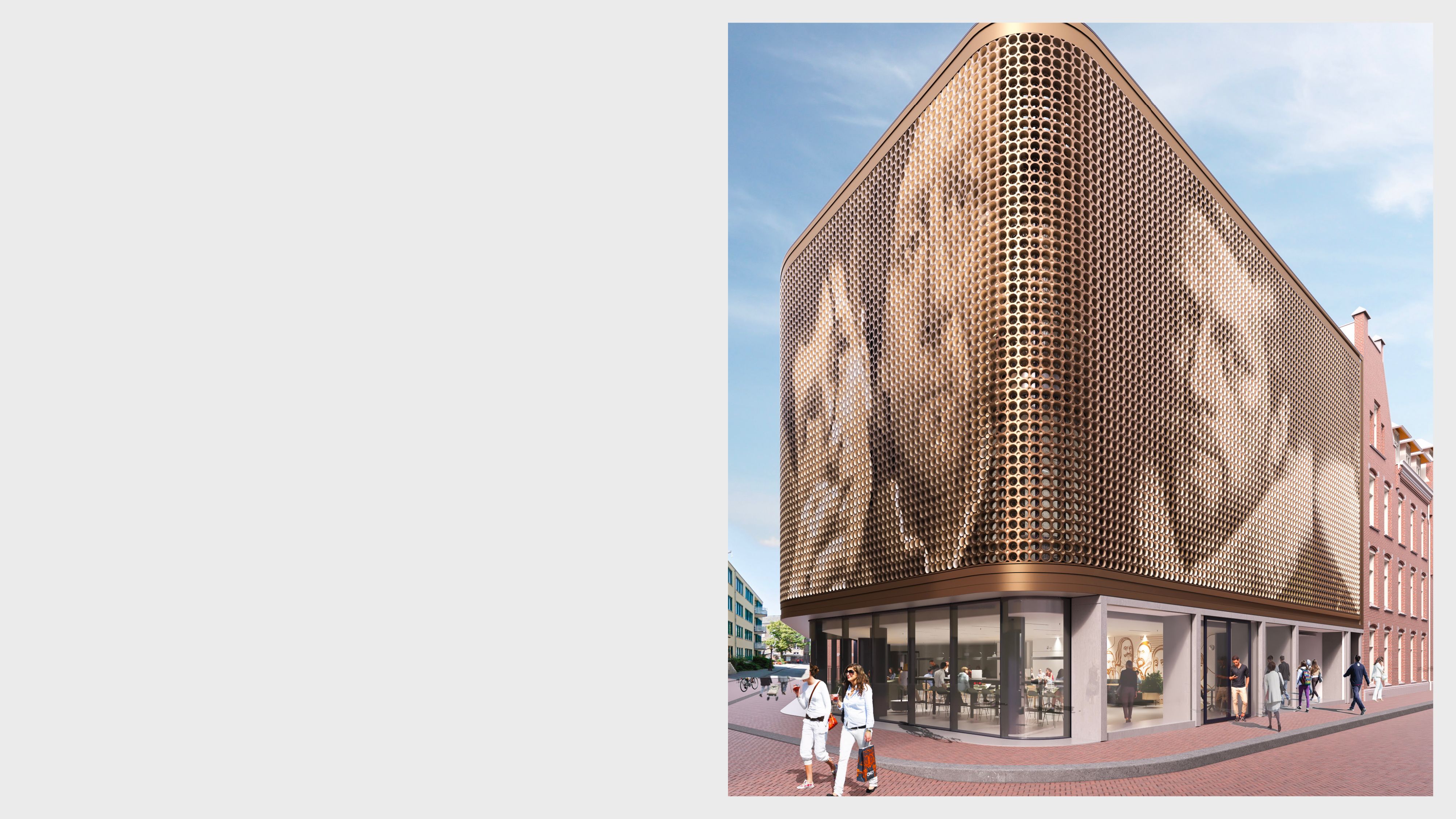
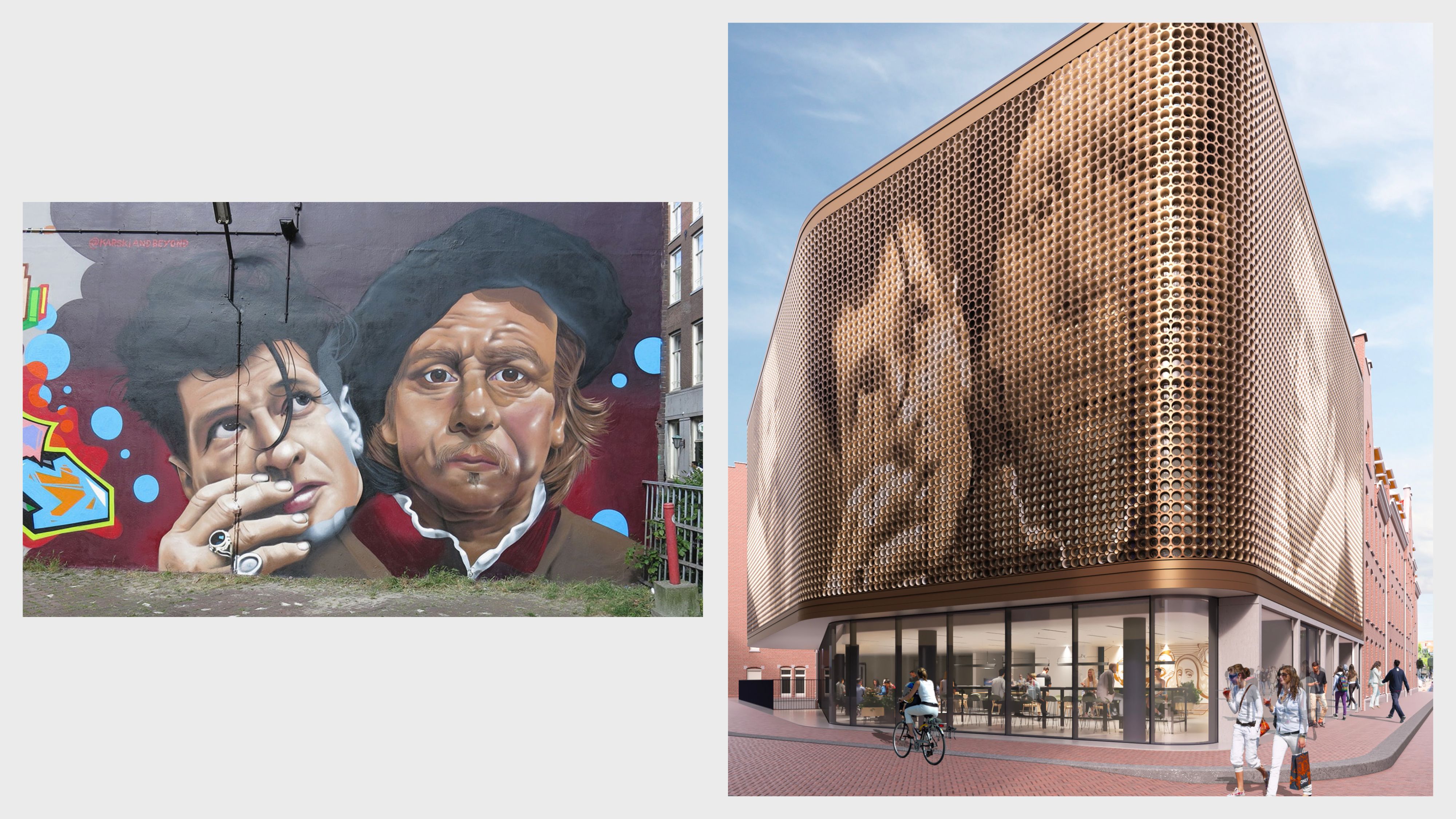
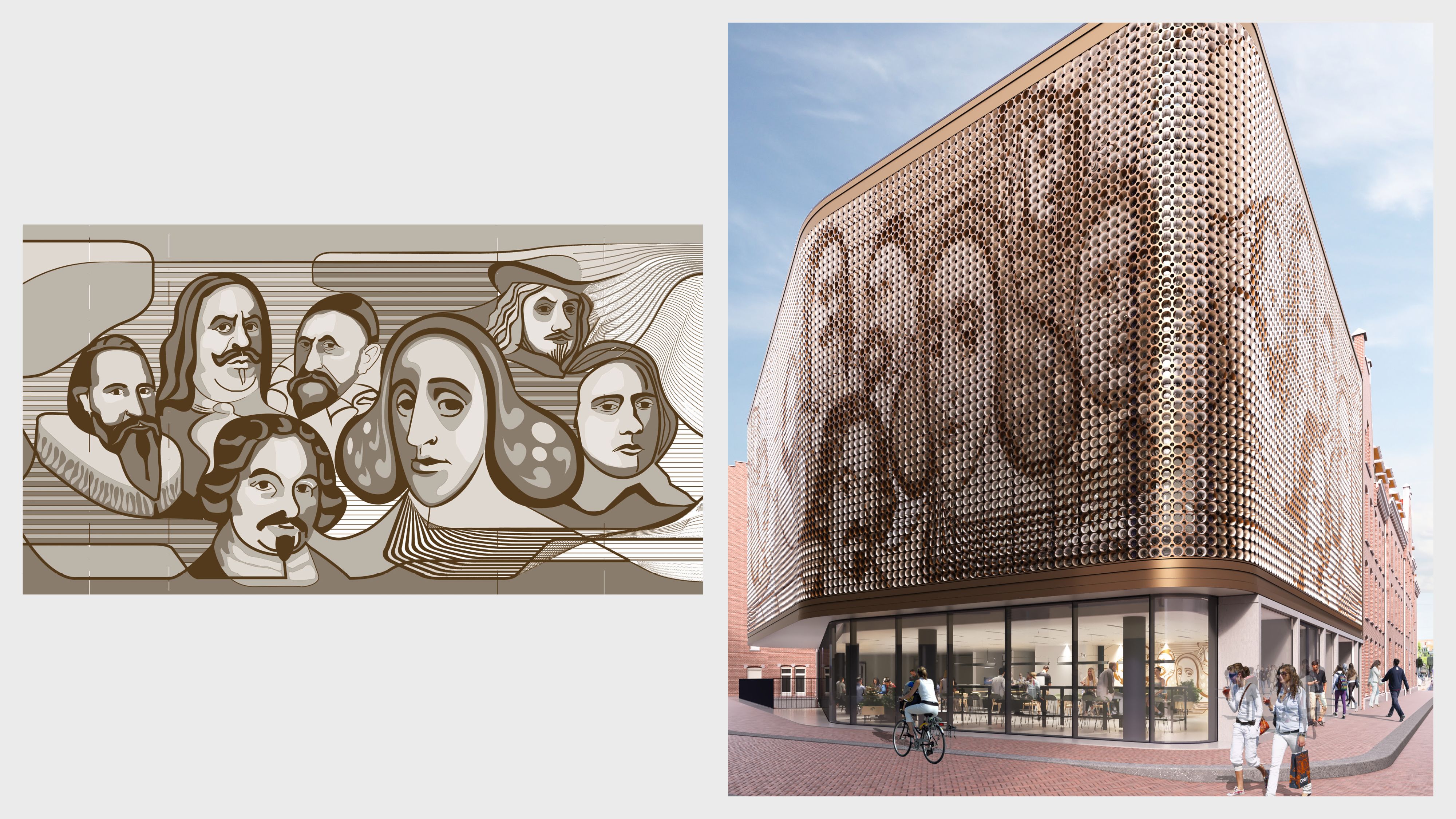
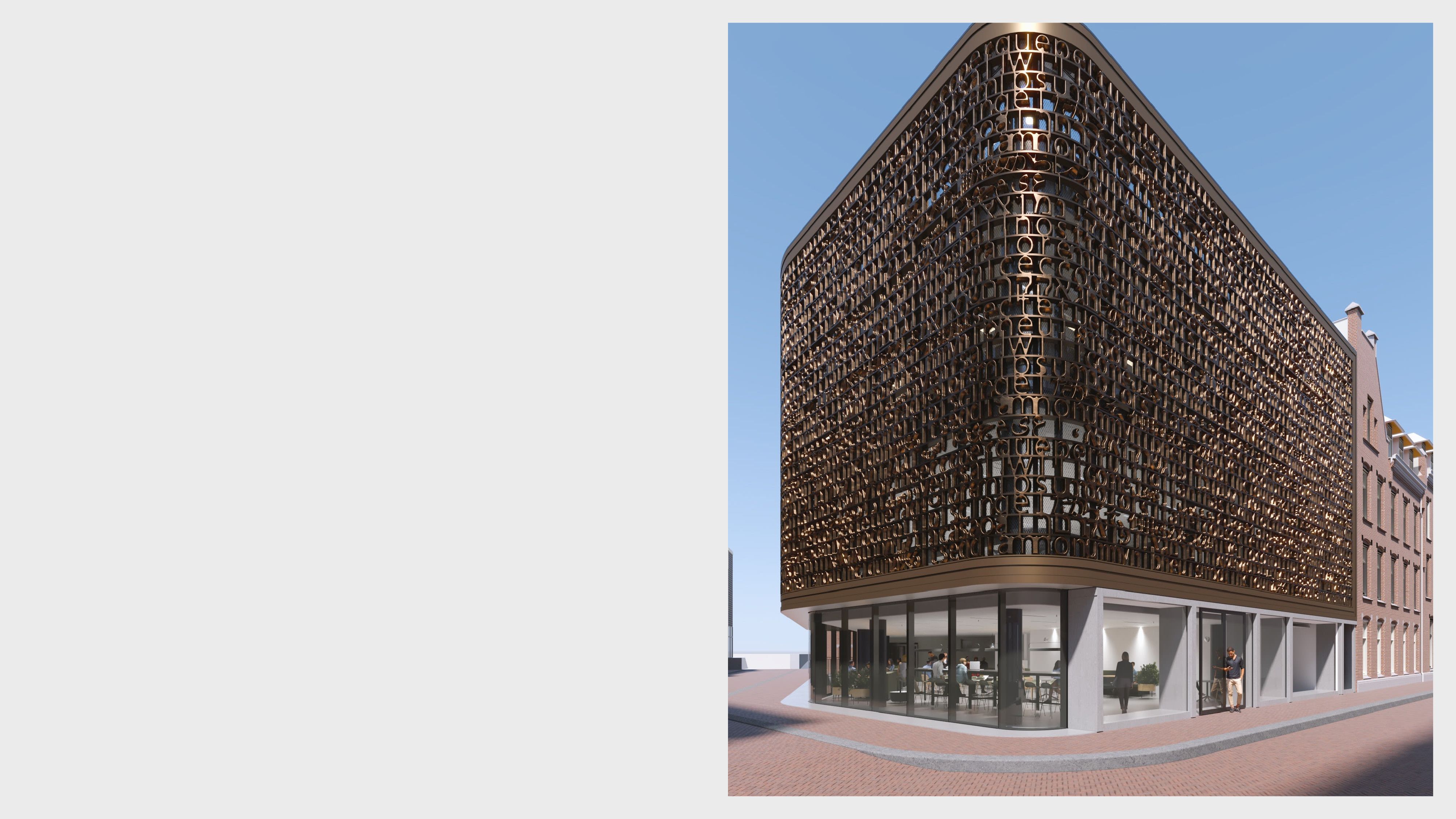
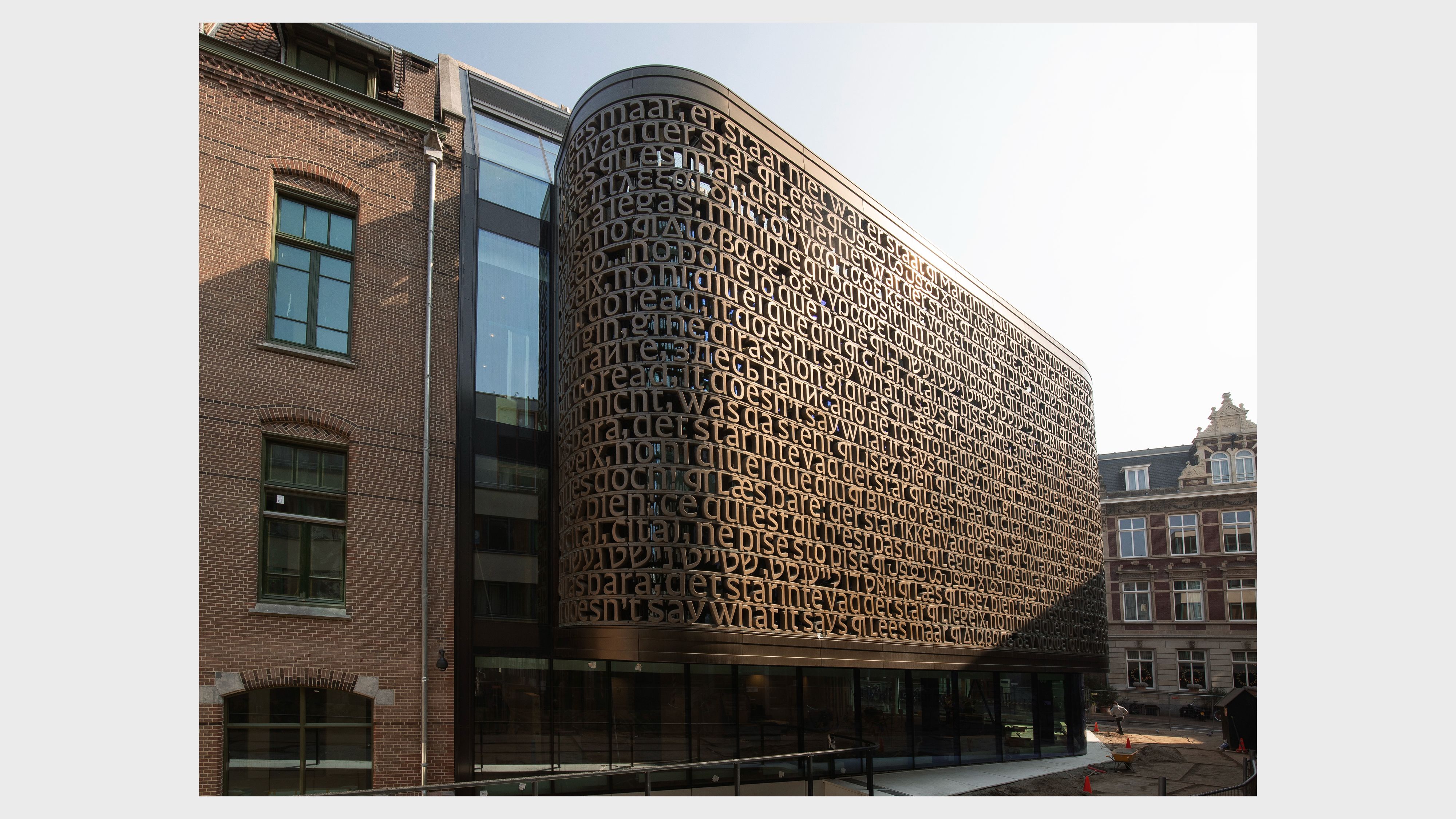
Design Based
on Portraits
The previously abstract image is now given a figurative interpretation. With this, the architect offers suggestions for how a design using recognizable images of people might turn out.
Herman Brood
and Rembrandt
van Rijn
On the façade, an image of Jan Pieterszoon Sweelinck appears, based on a Dutch banknote, alongside Herman Brood and Rembrandt van Rijn. The latter is a digitally altered version of the graffiti wall where Rembrandt and Herman Brood are depicted posing together—at the very spot where the new building now stands.
Tribute to Oxenaar
Robert (Ootje) Oxenaar (1929–2017) was a Dutch graphic designer and professor.
Starting in 1966, he designed guilder banknotes for De Nederlandsche Bank. He created the "Erflaters" series—banknotes featuring portraits of prominent figures from Dutch history, such as the poet and playwright Joost van den Vondel, the painter Frans Hals, the composer Jan Pieterszoon Sweelinck, the admiral Michiel de Ruyter, and the philosopher Baruch Spinoza.
Final Design
In the end, a graphic design with a clear link to the University of Amsterdam was chosen. A collaboration between the UvA, MVSA Architects, and typography designer Erik van Blokland resulted in the final graphic design, featuring a line from the poem Awater.
Martinus Nijhoff
The line “Lees maar, er staat niet wat er staat” (“But do read, it doesn’t say what it says”) comes from the 1934 poem Awater by Martinus Nijhoff. Nijhoff (1894–1953) was a prominent Dutch modernist poet, playwright, essayist, and translator.
Fragment, Awater (1934)
Fragment, Awater (1934)
Henny Vrienten Explains
There are several theories about how Nijhoff chose the title Awater, and who Awater actually was. Listen to the full poem here.
(17 minutes, in Dutch).
Hôtel des Pays Bas
Where you now see the new University Library building, there once stood older structures—this is a historic part of Amsterdam’s city center.
At Nieuwe Doelenstraat 11, the distinguished Hôtel des Pays Bas stood from 1801 onward. Many illustrious guests stayed at the hotel, including Hans Christiaan Andersen, who wrote about his visit to both Amsterdam and the hotel.
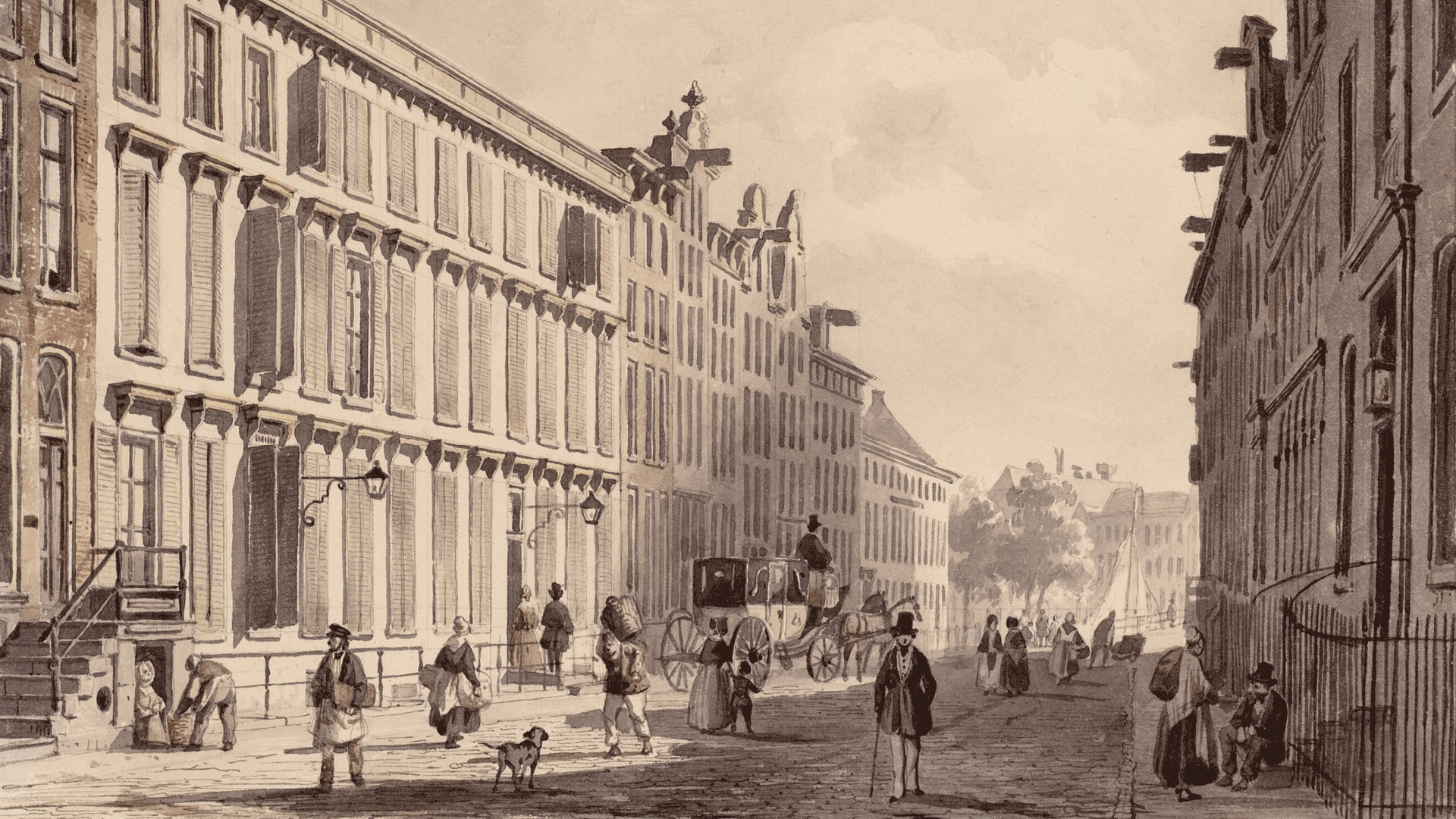
14 juni 1847
“Reisde eerste klasse [van Utrecht naar Amsterdam]; ik stak wel wat stoffig af bij de rest van het gezelschap. Bereikte in één uur Amsterdam en stapte af in Hôtel Pays Bas. Kreeg een kamer met uitzicht op een bloementuintje, heel eenzaam en stil. Om 9 uur naar bed.”
Hans Christiaan Andersen
The Nieuwe Doelenstraat
in the 1950s
In 1956, the Nieuwe Doelenstraat was, as it is now, a through street; from the Staalstraat, it was the road to the Munt. The hotel was still in operation but already a shadow of its former glory. The Binnengasthuisstraat did not yet exist.
Parking Lot
Around 1960, the University of Amsterdam acquired the by-then neglected hotel, which was demolished in 1967. From 1967 until 2019, the site served as a parking lot. This photo shows the UvA’s vehicle fleet from 1968.
The small parking lot became well-known in 2018 thanks to a mural by Karski & Beyond featuring portraits of Herman Brood and Rembrandt.
Herman Brood: Karski & Beyond
Herman Brood: Karski & Beyond
From inspiration to concept, from concept to finished product: the journey from A to Z of the building blocks for the façade of our new University Library.
Watch more episodes in the series
From Hospital to University Library
Archeological site
The hospital
The building history
The Residents
© Universiteit van Amsterdam
Photos: Stadsarchief Amsterdam (Photographer: Ino Roël)














